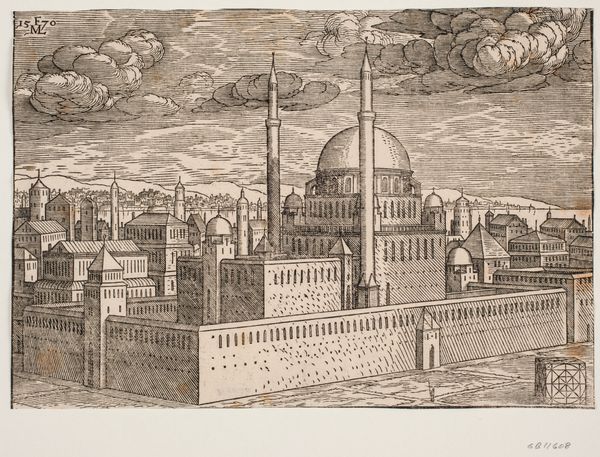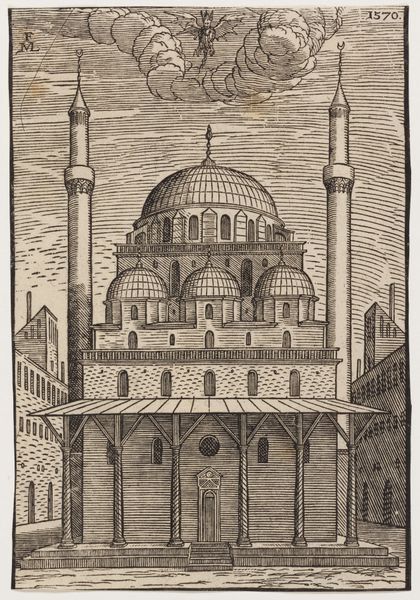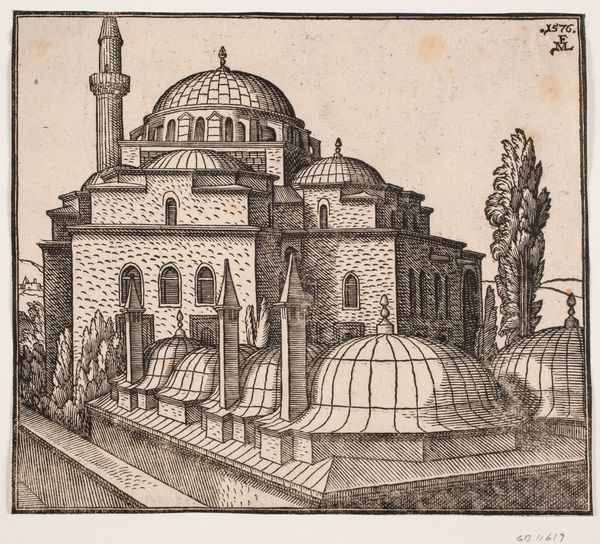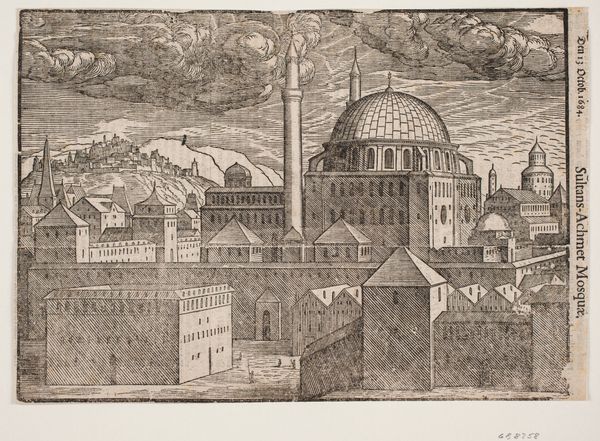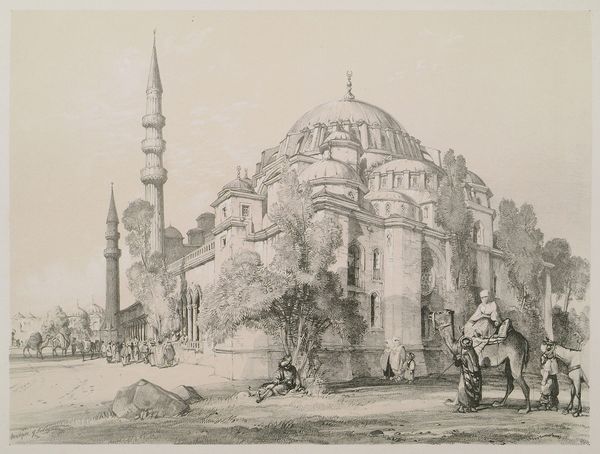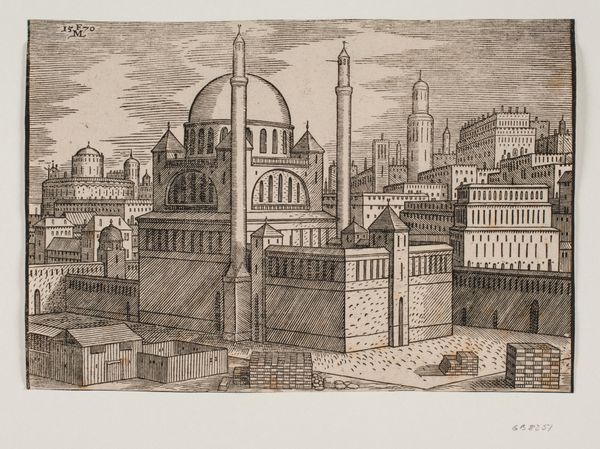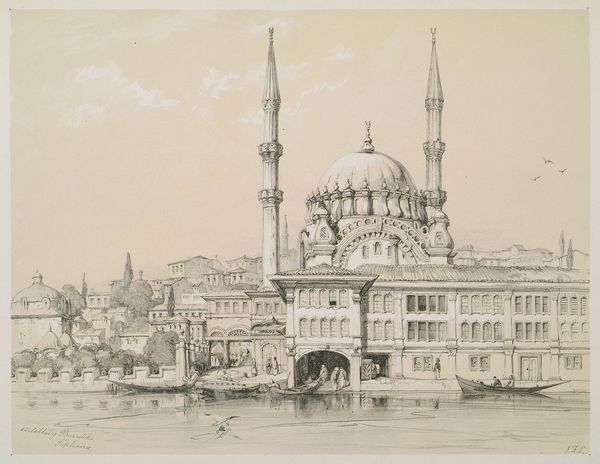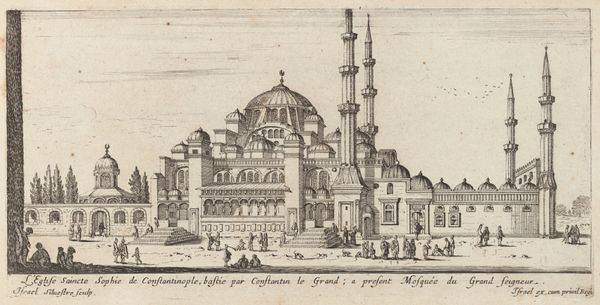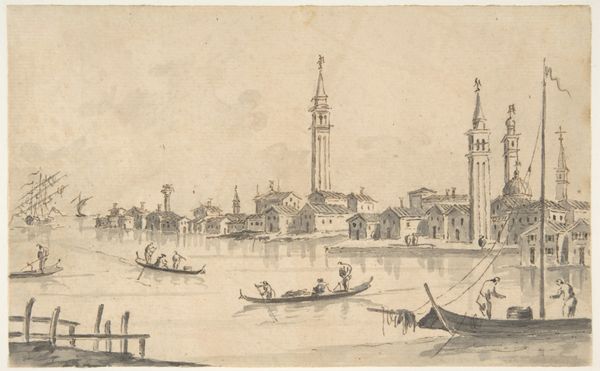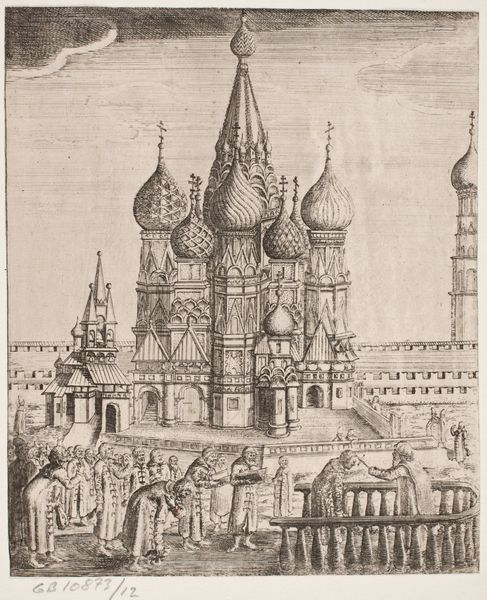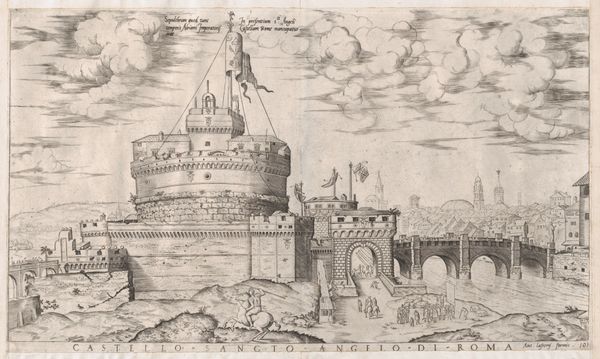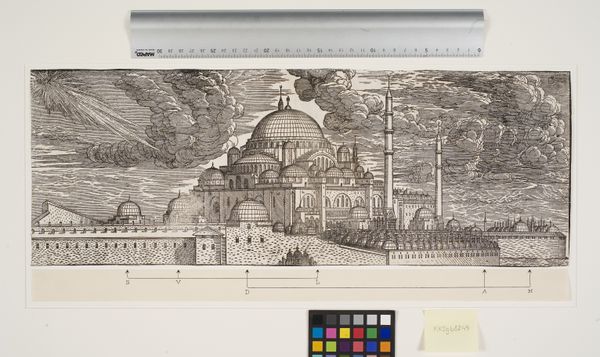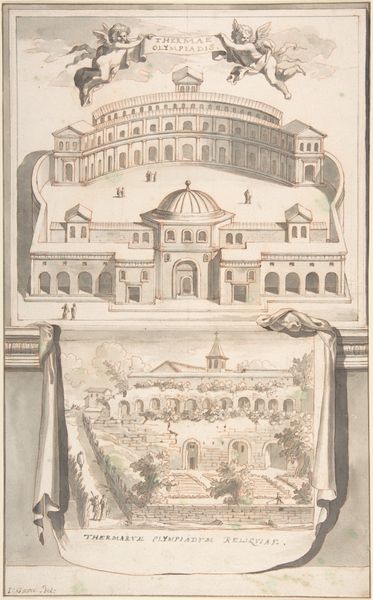
Idealized image of the Bayazidiye Mosque, seen from South East 1570
0:00
0:00
drawing, print, etching, woodcut
#
drawing
# print
#
etching
#
landscape
#
etching
#
woodcut
#
cityscape
#
islamic-art
Dimensions: 176 mm (height) x 254 mm (width) (bladmaal)
Curator: There’s a striking formality to this rendering of the Bayazidiye Mosque. Editor: It feels surprisingly serene, doesn't it? Despite the intricate detail, the monochrome palette lends it a quiet, almost meditative quality. Curator: Indeed. This etching and woodcut, titled "Idealized image of the Bayazidiye Mosque, seen from South East", was created around 1570 by Melchior Lorck. It’s a fascinating blend of artistic observation and political statement, revealing a European perspective on the Ottoman Empire during a period of significant cultural exchange and tension. Editor: The visual language of power is quite evident. The formidable walls, the symmetrical layout – it speaks volumes about the strength and stability the Ottomans wished to project. I wonder how much Lorck idealized versus how much he truly observed. Curator: That’s precisely the crucial question, isn't it? Lorck was commissioned to document the Ottoman court. He served Emperor Ferdinand I. We see here not only architectural detail, but also how European notions of order and perhaps even a subtle sense of orientalism seeped into the portrayal. Look at the small figures near the base – they are diminutive, perhaps highlighting the perceived distance and difference. Editor: The way the domes recede into the background feels deliberate too. The eye is drawn to the strong lines of the foreground, almost as if the mosque is being framed or perhaps even contained. Was this image intended to inform, or also to subtly reinforce a sense of European dominance? Curator: Likely, both. The symbolic weight of the image resides in its presentation. A European audience may see power but through their own cultural lenses. The meticulous detail would have fuelled both fascination and perhaps a veiled sense of superiority. Editor: It's amazing how a seemingly objective rendering can be so loaded. Seeing it through a contemporary lens, the work encourages questioning of power dynamics and artistic choices. It is clear that what seems documentation contains interpretation. Curator: Yes, a powerful reminder that seeing is never truly neutral; instead, it is layered with socio-political implication. The Mosque's story keeps on giving. Editor: Indeed. Each time we look at it, the conversation seems to expand and deepen.
Comments
No comments
Be the first to comment and join the conversation on the ultimate creative platform.
